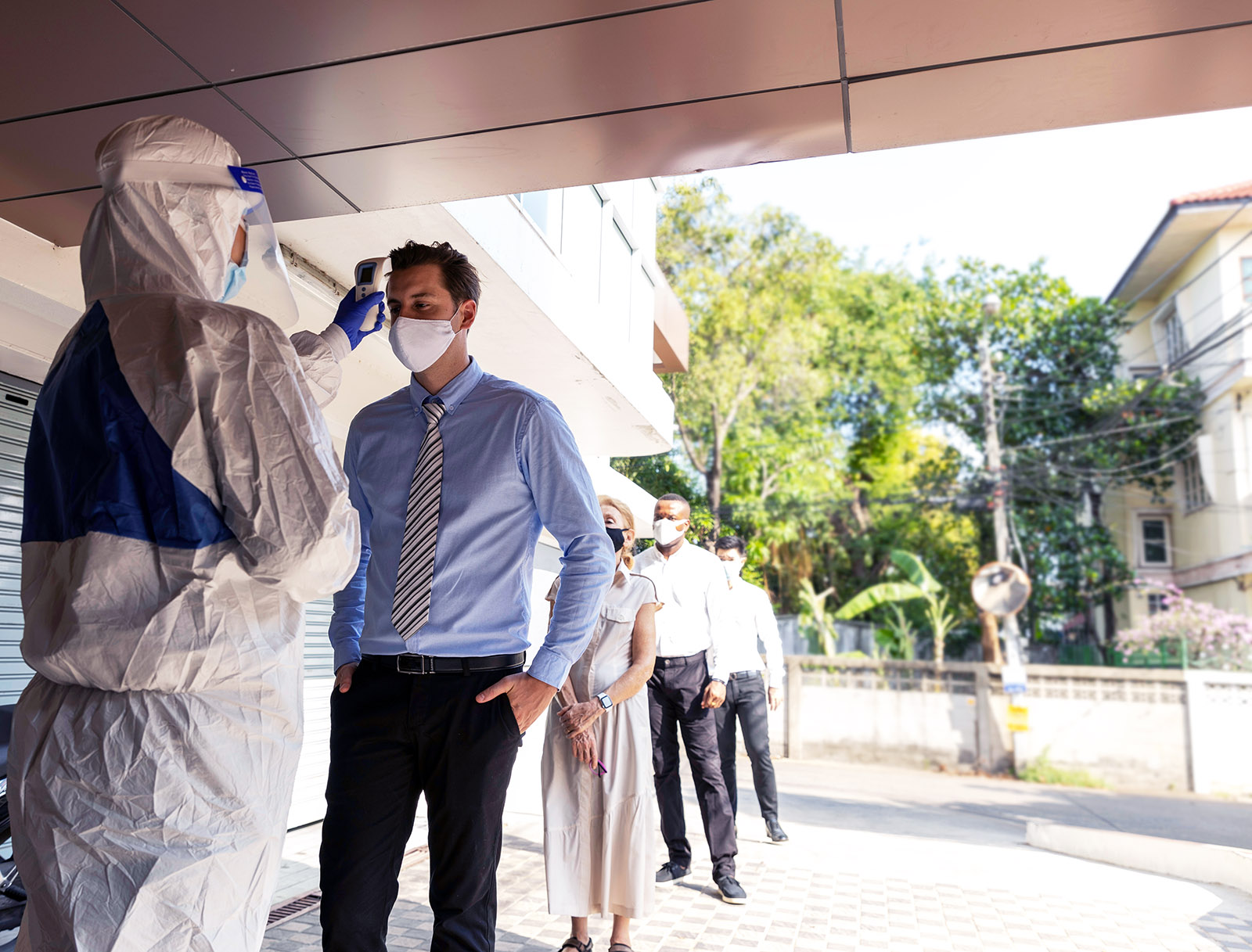“Stress Testing: Pushing Your Systems to the Brink to Ensure Resilience
Artikel Terkait Stress Testing: Pushing Your Systems to the Brink to Ensure Resilience
- The Heartbeat Of Now: Understanding Real-Time Computing
- The Astonishing World Of Image Recognition: From Pixels To Perception
- The Dawn Of Seamless Interaction: Exploring The Power Of Smart Interfaces
- Algorithm Development: A Comprehensive Guide
- Decoding Emotions: A Deep Dive Into Sentiment Analysis
Table of Content
Video tentang Stress Testing: Pushing Your Systems to the Brink to Ensure Resilience
Stress Testing: Pushing Your Systems to the Brink to Ensure Resilience

In the modern digital landscape, where systems are increasingly complex and user expectations are higher than ever, ensuring the reliability and stability of applications and infrastructure is paramount. One of the most effective methods for achieving this is stress testing. This technique goes beyond typical functional testing to deliberately overload a system, pushing it to its limits to identify weaknesses and vulnerabilities before they impact real users and business operations.
Stress testing is not just about finding break points; it’s about understanding how a system behaves under extreme conditions. This knowledge allows organizations to proactively address bottlenecks, optimize performance, and ultimately build more resilient and robust systems.
What is Stress Testing?
Stress testing is a type of performance testing that focuses on evaluating the stability and reliability of a system under extreme load conditions. It involves subjecting the system to a workload that exceeds its normal operating capacity, simulating scenarios like sudden spikes in user traffic, prolonged periods of high demand, or resource exhaustion. The goal is to identify the point at which the system fails, and to understand the system’s behavior leading up to and during that failure.
Key Objectives of Stress Testing:
- Identify Break Points: Determine the maximum load a system can handle before it becomes unstable or crashes. This helps define the system’s true capacity.
- Uncover Performance Bottlenecks: Pinpoint specific components or processes that are causing performance degradation under stress. This allows for targeted optimization efforts.
- Assess Data Integrity: Verify that data remains consistent and accurate even when the system is under extreme load. This is crucial for maintaining data reliability.
- Evaluate System Recovery: Determine how quickly and effectively the system can recover after a failure. This is critical for minimizing downtime and business disruption.
- Improve Error Handling: Identify weaknesses in the system’s error handling mechanisms and ensure that appropriate error messages are displayed to users and administrators.
- Enhance Scalability: Determine the system’s scalability characteristics and identify areas that need improvement to handle future growth.
- Reduce Risk: Proactively identify and address vulnerabilities before they can be exploited in a production environment, minimizing the risk of outages, data loss, and reputational damage.

Types of Stress Testing:

Stress testing encompasses various techniques, each designed to simulate different types of stress. Here are some common types:
- Load Testing: Simulates a gradual increase in user load to identify performance bottlenecks and determine the system’s capacity. This is often a precursor to more intense stress testing.
- Volume Testing: Involves flooding the system with large volumes of data to test its ability to handle and process information effectively. This is particularly relevant for databases and data-intensive applications.
- Endurance Testing (Soak Testing): Subjects the system to a sustained load over an extended period to identify memory leaks, resource depletion, and other long-term stability issues.
- Spike Testing: Simulates sudden and extreme spikes in user traffic to assess the system’s ability to handle unexpected surges in demand. This is crucial for systems that experience periodic bursts of activity.
- Configuration Testing: Evaluates the system’s performance under different hardware and software configurations. This helps identify optimal configurations for performance and stability.
- Recovery Testing: Forces the system to fail and then assesses its ability to recover gracefully and restore data integrity. This is critical for ensuring business continuity in the event of a disaster.
- Distributed Stress Testing: Tests the performance and reliability of a distributed system by stressing multiple components simultaneously. This is important for complex systems that rely on inter-component communication.
- Application Stress Testing: Focuses specifically on the performance and stability of a particular application under stress, considering factors like code efficiency, database interactions, and network communication.

The Stress Testing Process:
A well-defined process is essential for successful stress testing. Here’s a typical approach:
- Planning: Define the scope of the testing, identify the critical system components, and establish clear performance goals. This includes defining the metrics that will be monitored and the acceptable levels of performance.
- Test Environment Setup: Create a realistic test environment that closely mirrors the production environment. This ensures that the test results are representative of real-world performance.
- Test Case Design: Develop test cases that simulate realistic stress scenarios, including peak load, data volume overload, and resource exhaustion. These test cases should be designed to push the system to its limits.
- Test Execution: Execute the test cases and monitor the system’s performance using appropriate monitoring tools. This includes tracking metrics like CPU utilization, memory usage, network latency, and response times.
- Data Analysis: Analyze the test results to identify performance bottlenecks, error conditions, and system weaknesses. This analysis should focus on understanding the root causes of performance degradation.
- Reporting: Document the test results, including the identified issues and recommendations for improvement. The report should be clear, concise, and actionable.
- Remediation: Implement the recommended improvements and retest the system to ensure that the issues have been resolved and that the system’s performance has been improved.
- Continuous Monitoring: Implement ongoing monitoring to detect performance issues and prevent future problems. This helps ensure that the system remains stable and reliable over time.
Tools for Stress Testing:
Numerous tools are available to facilitate stress testing, ranging from open-source options to commercial solutions. Some popular tools include:
- Apache JMeter: A widely used open-source tool for load and performance testing.
- Gatling: Another open-source load testing tool known for its high performance and scalability.
- LoadRunner: A commercial performance testing tool with advanced features and capabilities.
- NeoLoad: A commercial load testing tool that offers a user-friendly interface and comprehensive reporting.
- BlazeMeter: A cloud-based performance testing platform that provides a scalable and flexible testing environment.
- Selenium: Primarily used for web application testing, Selenium can also be used to generate load and simulate user interactions.
- Locust: An open-source load testing tool written in Python, known for its simplicity and ease of use.
The choice of tool depends on the specific requirements of the project, the complexity of the system, and the budget available.
Best Practices for Stress Testing:
- Start Early: Integrate stress testing into the development lifecycle as early as possible to identify and address issues before they become more difficult and costly to fix.
- Realistic Scenarios: Design test cases that accurately reflect real-world usage patterns and stress conditions.
- Comprehensive Monitoring: Use appropriate monitoring tools to track key performance metrics and identify potential bottlenecks.
- Automate Tests: Automate the stress testing process to ensure consistency and repeatability.
- Collaboration: Involve developers, testers, and operations teams in the stress testing process to ensure a comprehensive understanding of the system’s behavior.
- Document Everything: Document all aspects of the stress testing process, including the test plan, test cases, results, and recommendations.
- Regular Retesting: Regularly retest the system after making changes to ensure that performance and stability have not been compromised.
- Focus on Critical Components: Prioritize stress testing on the most critical components of the system to ensure that they can handle the expected load.
Benefits of Stress Testing:
- Improved System Reliability: By identifying and addressing weaknesses, stress testing helps to build more reliable and robust systems.
- Reduced Downtime: By proactively identifying potential failure points, stress testing helps to minimize downtime and business disruption.
- Enhanced Performance: By identifying performance bottlenecks, stress testing helps to optimize system performance and improve user experience.
- Cost Savings: By identifying and addressing issues early in the development lifecycle, stress testing can help to reduce the cost of fixing problems later on.
- Increased Customer Satisfaction: By ensuring that systems can handle peak loads, stress testing helps to improve customer satisfaction and loyalty.
- Better Resource Utilization: Stress testing helps in understanding how resources are being utilized under pressure, leading to optimized resource allocation.
FAQ on Stress Testing:
Q: What is the difference between load testing and stress testing?
- A: Load testing focuses on evaluating the system’s performance under normal or expected load conditions, while stress testing pushes the system beyond its normal capacity to identify its breaking point and understand its behavior under extreme conditions. Load testing is a subset of performance testing, while stress testing is a more extreme form of performance testing.
Q: When should stress testing be performed?
- A: Stress testing should be performed at various stages of the development lifecycle, including during development, after significant code changes, before deployment to production, and periodically after deployment to ensure ongoing stability.
Q: Who should be involved in stress testing?
- A: The stress testing team should include developers, testers, operations engineers, and potentially business stakeholders. Collaboration is crucial for effective stress testing.
Q: How do you determine the right level of stress for testing?
- A: The level of stress should be determined based on the expected peak load, potential surge scenarios, and the criticality of the system. It’s important to simulate realistic stress conditions to get meaningful results.
Q: What metrics should be monitored during stress testing?
- A: Key metrics to monitor include CPU utilization, memory usage, disk I/O, network latency, response times, error rates, and resource contention.
Q: How often should stress testing be performed?
- A: The frequency of stress testing depends on the criticality of the system, the frequency of code changes, and the business requirements. It’s generally recommended to perform stress testing regularly, especially before major releases or updates.
Conclusion:
Stress testing is an indispensable practice for ensuring the reliability, stability, and scalability of modern systems. By proactively identifying and addressing weaknesses under extreme conditions, organizations can mitigate the risk of outages, improve performance, and enhance user experience. While it requires careful planning, execution, and analysis, the benefits of stress testing far outweigh the effort involved. In today’s competitive landscape, where system downtime can have significant financial and reputational consequences, stress testing is not just a best practice; it’s a necessity. By embracing stress testing, organizations can build more resilient systems that can withstand the demands of the modern digital world.
